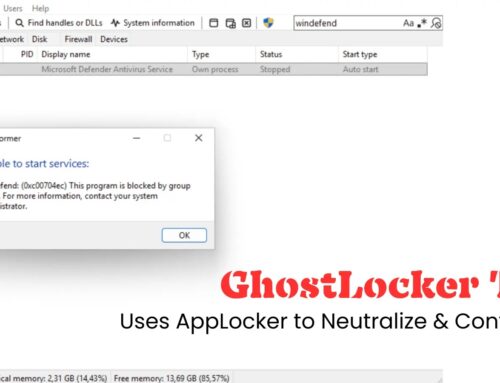
Water Saci Hackers Leverage WhatsApp to Deliver Multi-Vector Persistent SORVEPOTEL Malware
In the constant tug-of-war between cyber defenders and malicious actors, a new and unsettling threat has emerged, specifically targeting users in Brazil. The Water Saci campaign, spearheaded by sophisticated attackers, is leveraging the ubiquity of WhatsApp to rapidly propagate its potent SORVEPOTEL malware. This isn’t just another phishing scam; it’s a multi-vector, persistent threat that demands our immediate attention and understanding. As cybersecurity professionals, grasping the intricacies of such campaigns is paramount to safeguarding our digital ecosystems.
Understanding the Water Saci Campaign and SORVEPOTEL Malware
The Water Saci campaign, first identified in September 2025 by Trend Micro analysts, signifies a significant escalation in mobile-centric cyberattacks. Its defining characteristic is the ingenious use of WhatsApp, a platform with billions of users, as its primary distribution vector. This choice allows for incredibly rapid infection rates and widespread dissemination within victim networks. The campaign’s core weapon is the SORVEPOTEL malware, a multi-vector threat designed for persistence and extensive compromise.
By October 2025, the Water Saci campaign had already demonstrated remarkable evolution. Analysts observed the introduction of new script-based functionalities, indicating a dynamic and adaptable adversary. This evolution suggests that the attackers are not only skilled but also actively refining their tools and tactics to bypass emerging defenses.
WhatsApp as a Distribution Vector: A Grave Concern
The choice of WhatsApp for malware distribution is particularly alarming due to several factors:
- Widespread Adoption: WhatsApp is a dominant communication platform, especially in regions like Brazil, ensuring a massive potential victim pool.
- Trust Factor: Users often have a higher degree of trust in messages received through private messaging apps, especially if they appear to originate from known contacts, making them more susceptible to social engineering.
- Ease of Propagation: Malicious links or files shared via WhatsApp can spread virally through group chats and individual messages, turning unwitting users into vectors.
- Encryption Misconception: While WhatsApp messages are end-to-end encrypted, this encryption protects the communication channel, not the content’s safety if it contains malware.
The Multi-Vector Nature of SORVEPOTEL Malware
While the exact technical specifications of SORVEPOTEL’s multi-vector capabilities were not fully detailed in the initial reports, the term “multi-vector” implies that the malware is designed to:
- Exploit various system vulnerabilities, potentially spanning different operating systems (Android, iOS for mobile, or Windows/macOS if a user clicks a link on a desktop).
- Employ diverse attack methods, such as phishing, drive-by downloads, or even exploiting unpatched software.
- Maintain persistence through multiple mechanisms, ensuring that even if one component is removed, others continue to function.
This adaptability makes SORVEPOTEL a formidable opponent, requiring a comprehensive defense strategy rather than relying on single-point solutions.
Remediation Actions and Proactive Defense
Mitigating the threat posed by campaigns like Water Saci and malware like SORVEPOTEL requires a multi-layered approach, combining user education with robust technical controls.
- User Awareness Training: Educate users about the dangers of clicking suspicious links or downloading files from unknown sources on WhatsApp, even if they appear to come from a contact. Reinforce the “think before you click” mantra.
- Mobile Device Management (MDM): Implement rigorous MDM policies for organizational devices, enforcing app store-only downloads and restricting sideloading of applications.
- Endpoint Detection and Response (EDR): Deploy advanced EDR solutions on all endpoints, including mobile devices, to detect and respond to suspicious activities indicative of malware infection.
- Regular Software Updates: Ensure all operating systems, applications, and security software are kept up-to-date. Patching known vulnerabilities, such as CVE-2022-26377 (a sample CVE for a common mobile vulnerability, not directly related but illustrative of the need for patching), is crucial to close common attack vectors.
- Antivirus/Anti-Malware Software: Utilize reputable antivirus and anti-malware solutions on all devices, configured for real-time scanning.
- Network Segmentation: Isolate critical systems and networks to limit the lateral movement of malware should an infection occur.
- Backup and Recovery: Implement regular, secure backups of critical data to enable rapid recovery in the event of a successful attack.
Key Takeaways for Cybersecurity Professionals
The Water Saci campaign is a stark reminder that cyber threats are constantly evolving, exploiting human behavior and technological advancements simultaneously. The reliance on WhatsApp as a primary vector for SORVEPOTEL demonstrates a strategic shift towards leveraging widely adopted communication platforms for rapid and pervasive distribution. Cybersecurity professionals must prioritize user education, implement advanced endpoint protection, and maintain proactive patching schedules to counter these sophisticated, multi-vector threats. Staying informed about emerging campaigns and understanding their distribution mechanisms is critical in building resilient defense strategies.





